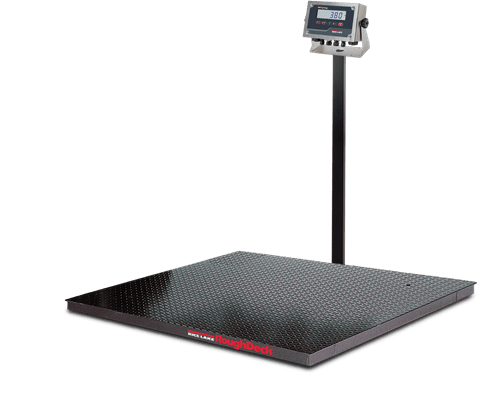
Floor scales are used in numerous business arenas to accurately measure weight of goods and materials for the consumer. For instance, weighing cargo can help avoid transporting illegal trailer loads on the roadways or even damage to their equipment.
Floor scales are meant to accurately weigh several different loads including drums, skids, barrels, and other large items. This way you can more precisely determine what you have without having to look over every single piece of cargo. This can be perfect for weighing a load for travel, as you can eliminate the possibility of creating strain or damaging the transport.
When you receive your scale, be sure to put it on a clean, flat surface out of the way of machinery or other hazards that may cause damage to it. The scale will have an interface cable either stored beneath the platform or in the junction box area on the platform in which it will need to be connected to the digital indicator prior to weighing. From there you can weigh, tare, and prepare orders.
Note: To ensure correct weighments always inspect to make sure all debris is free from around and beneath the platform.
If you have a mild steel (non-washdown) scale raise the platform and remove debris with a broom or dust mop. If you do have a stainless steel or watertight scale, you will want to wash down the scale periodically. These floor scales will have their own washdown sequence and equipment.
You can order a customized floor scales depending on your needs. They are often low to the ground (normally 3 inches) and can vary in weights and size. Most standard floor scales come with diamond plate safety tread for working in an environment where there may be fluids or other slippery materials. There are also optional ramps that can be perfect for rolling barrels or drums onto the scale.
Stainless steel floor scales are also available for measurements of food, chemicals, pharmaceuticals, and will avoid corrosion. All floor scales ordered through Garber Metrology will be calibrated prior to
placing them into service. Once placed in service, regular maintenance and calibration are
recommended.